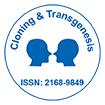
क्लोनिंग एवं ट्रांसजेनेसिस
खुला एक्सेस
आईएसएसएन: 2168-9849

आईएसएसएन: 2168-9849
Batool Mutar Mahdi
Human leukocyte antigen system is the major histocompatibility complex in humans, which includes several hundreds of genes located in a highly polymorphic region of chromosome 6 that encode for proteins critical for the immune system. HLA Class I antigens (A, B and C) transport and present peptides produced by degradation of proteins inside the cell like viral antigens, to CD8+ T cells, in addition to that the HLA Class I, carry also foreign or not-self antigens. Under normal conditions, these T –cell CD 8+ cells recognize but do not destroy those cells with the right “self”Ag, unless they also carry a non-self antigen. Under pathological conditions, like in certain autoimmune diseases T cells can destroy cells carrying self-antigens, causing autoimmune diseases. The role of HLA Class II antigens (DRB1, DRB3,4,5, DQA1/DQB1, DPB1) is to present the peptides from processed proteins that are produced outside the cell, derived from bacteria and protozoa, to helper T-cells CD4+ to stimulate their multiplication. These helper T cells then stimulate B-cells to produce antibodies against the foreign antigens. HLA and disease associations have been widely studied across the populations worldwide and are found to be important in prediction of disease susceptibility, resistance or protective and of evolutionary maintenance of genetic diversity. Here, in this review, we have collected HLA association data on some autoimmune diseases, infectious diseases, cancers, and other diseases with unknown etiology in Iraq and attempt to summarize some remarkable HLA alleles related with specific diseases.